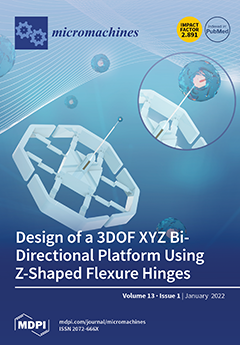Owing to its ubiquity in natural water systems and the high toxicity of its accumulation in the human body, it is essential to develop simple and low-cost electrochemical sensors for the determination of 3,3′,5,5′-tetrabromobisphenol A (TBBPA). In this work, Fe
3O
4
[...] Read more.
Owing to its ubiquity in natural water systems and the high toxicity of its accumulation in the human body, it is essential to develop simple and low-cost electrochemical sensors for the determination of 3,3′,5,5′-tetrabromobisphenol A (TBBPA). In this work, Fe
3O
4–activated biochar, which is based on excess sludge, was prepared and characterized using scanning electron microscopy (SEM), energy dispersive spectroscopy (EDS), Fourier transform infrared spectroscopy (FTIR) and BET analysis to analyze its basic features. Subsequently, it was used to fabricate an electrochemical sensor for the detection of TBBPA. The electrochemical test results revealed that the Fe
3O
4–activated biochar film exhibited a larger active surface area, a lower charge transfer resistance and a higher accumulation efficiency toward TBBPA. Consequently, the peak current of TBBPA was significantly enhanced on the surface of the Fe
3O
4–activated biochar. The TBBPA sensing platform developed using the Fe
3O
4–activated biochar composite film, with relatively a lower detection limit (3.2 nM) and a wider linear range (5–1000 nM), was successfully utilized to determine TBBPA levels in water samples. In summary, the effective application of Fe
3O
4–activated biochar provided eco-friendly and sustainable materials for the development of a desirable high-sensitivity sensor for TBBPA detection.
Full article






